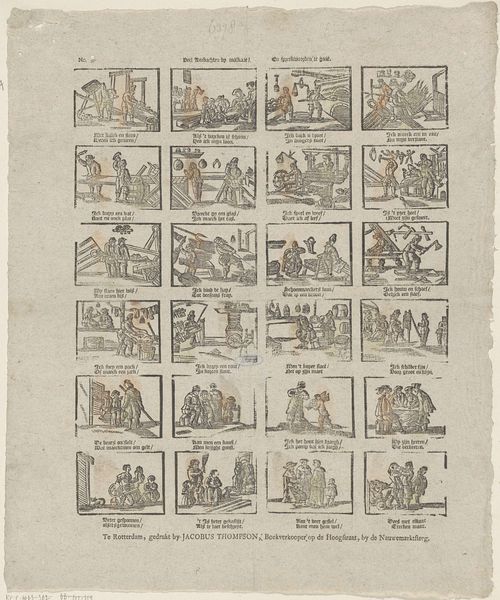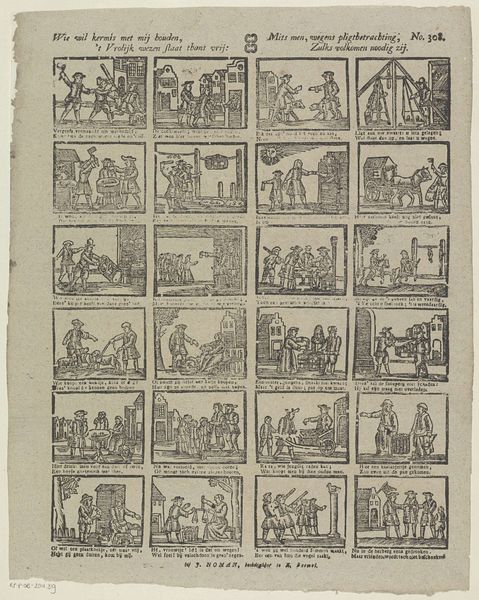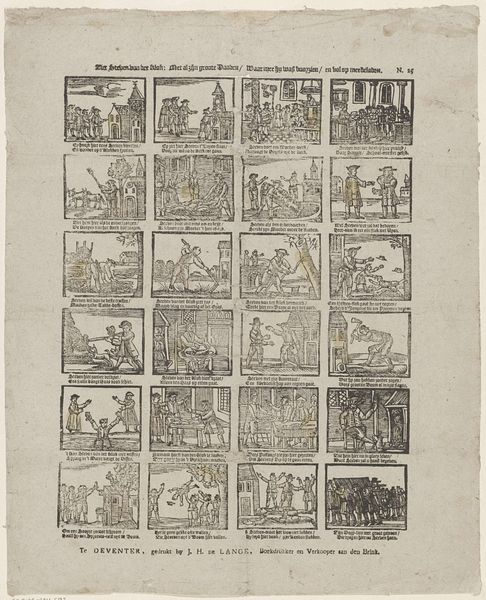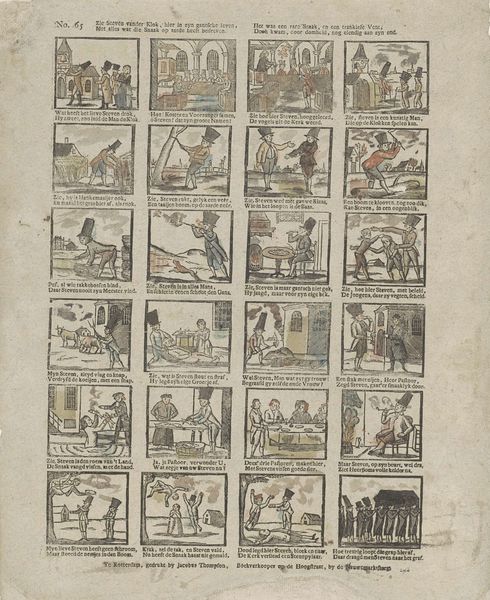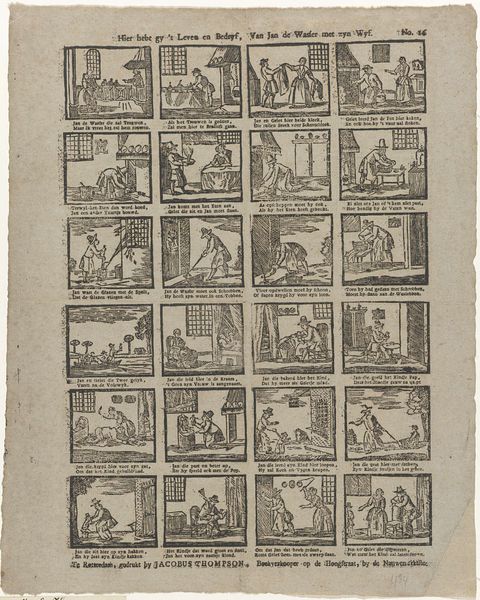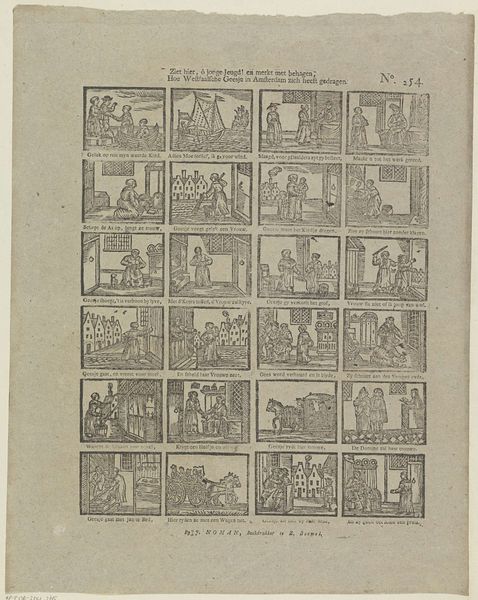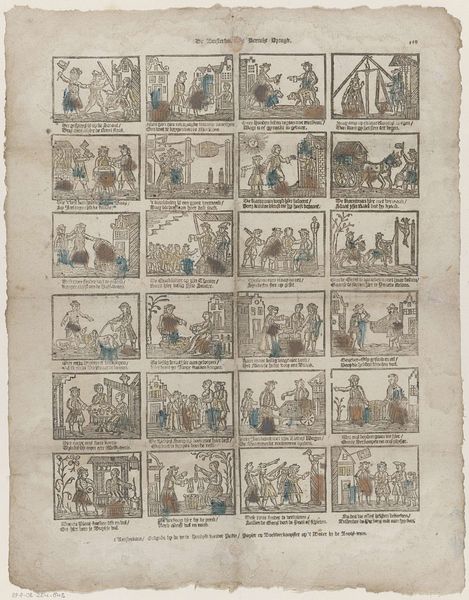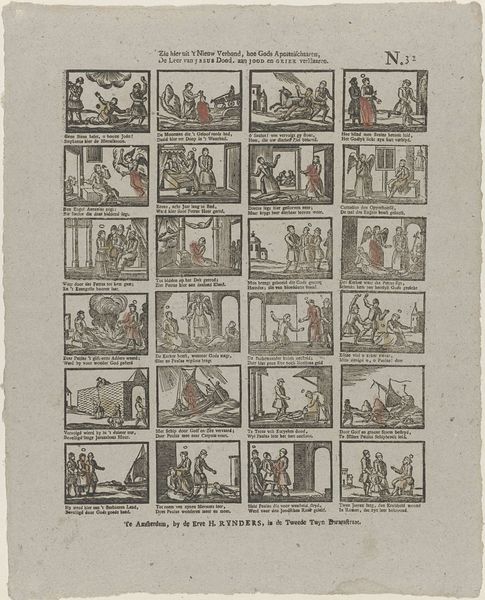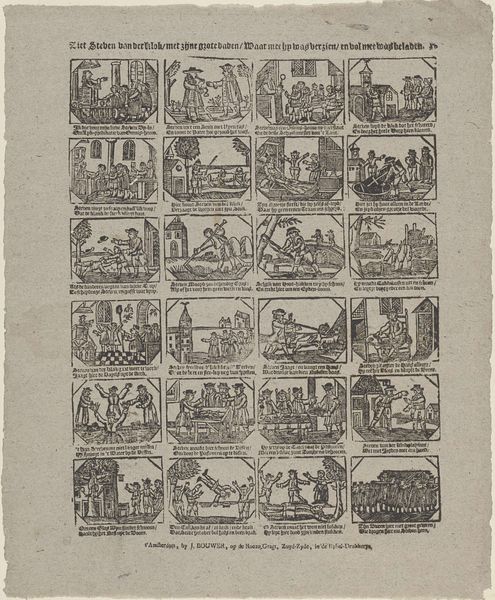
Jan van Spanje vind gy hier / Met Trijn Salie op 't papier 1725 - 1780
0:00
0:00
print, engraving
#
narrative-art
#
baroque
#
dutch-golden-age
# print
#
old engraving style
#
folk-art
#
genre-painting
#
engraving
Dimensions: height 423 mm, width 309 mm
Copyright: Rijks Museum: Open Domain
Editor: This print, titled "Jan van Spanje vind gy hier / Met Trijn Salie op 't papier", dates to between 1725 and 1780 and is attributed to Johannes (II) Kannewet. It's fascinating; almost like an early form of comic strip. All these little scenes... What can you tell me about the imagery and its significance? Curator: It’s an engraving brimming with stories, snippets of Dutch life captured in tiny, vibrant scenes. Think of each frame not just as an image, but as a cultural symbol. Do you notice how frequently figures are gesturing, interacting? The repeating gestures point towards specific narratives or even morality tales common at that time. What feelings do these symbols and scenes evoke in you? Editor: A sense of everyday life, though perhaps idealized? The details feel intimate. Is it intended as social commentary? Curator: Very possibly. Consider the domestic spaces shown here, for example. Aren't they intriguing in how they highlight particular objects, behaviours? Think of genre painting from the Dutch Golden Age and how domestic life held a lot of weight then. What sort of emotions would ordinary folk feel viewing this artwork, and are those different now, 300 years later? Editor: It seems there's a continuous storyline intended from one panel to the next. What kind of cultural continuity can we identify through the symbols used here? Curator: Notice the limited but effective colour palette – what impact do you think that has? Colours often acted as mnemonic devices, each holding coded emotional or even religious associations within Dutch society. We see cultural values regarding community, work, maybe even relationships. What you’re seeing isn’t just an artwork, it's a window into a cultural memory bank, available to be accessed by anyone able to read it. Editor: I see now; the repeated themes give an intimate look into the cultural mindset during this time. Thanks! Curator: Indeed, a fascinating intersection of art, life, and cultural memory.
Comments
No comments
Be the first to comment and join the conversation on the ultimate creative platform.
